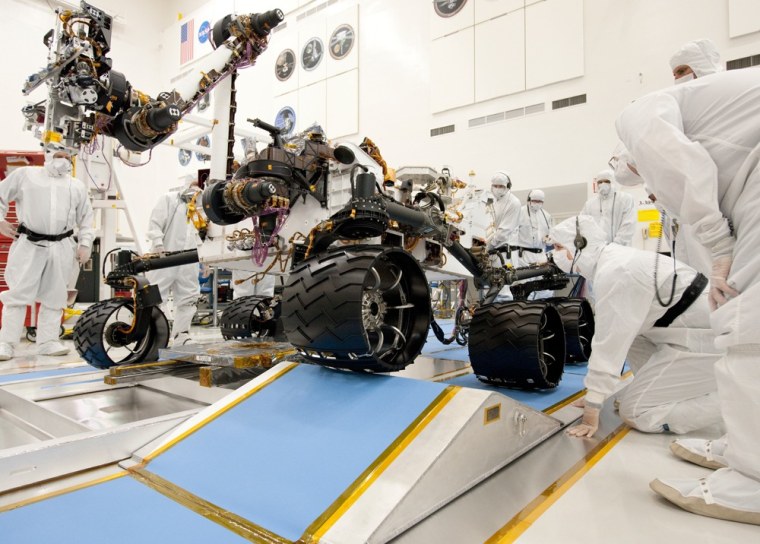NASA's next-generation rover to the surface of Mars will be quite the behemoth — with a price tag to match.
Nine months before its scheduled launch, the space agency said the flagship mission has burned through its reserves and needs an extra $82 million to complete testing before liftoff.
It's the latest cost overrun to plague the Mars Science Laboratory, a nuclear-powered rover the size of a small sports utility vehicle that will study whether the planet was or is still habitable.
Technical snags during development coupled with ballooning costs forced NASA to delay the launch by two years. Curiosity, as the rover is known, is now slated to lift off in late November from Cape Canaveral Air Force Station in Florida.
The latest price tag? $2.5 billion, making it the most expensive mission yet to Mars.
NASA broke the bad news last week to members of the planetary science subcommittee of the NASA Advisory Council, which provides input to the space agency. It blamed the latest budget woes on issues that cropped up during testing involving the rover's avionics, landing radar and drill that took more time and money than expected to fix.
Arizona State University planetary scientist Ronald Greeley, who chairs the panel, was disappointed about the latest cost increase, but still supports the mega-rover.
"We want that mission to fly," Greeley said.
The problem could have been worse, some scientists say.
The amount needed to usher Curiosity to the launch pad is relatively small compared to what's already been spent, said Arizona State University astronomer Jim Bell, who works on the long-running twin Mars rovers mission.
Still, researchers are bracing for possible cuts to their projects to cover the latest cost growth.
"It's unavoidable that there will be some pain," Bell said.
Just how much pain remains to be seen. NASA said the extra cash will come from its planetary science division, which funds everything from technology development to Mars missions to projects to the outer solar system.
Jim Green, who heads the division, said in a statement it's too soon to know what missions will be affected. He noted that "no other projects are being cancelled or delayed to provide funding" for Curiosity.
Since 2008, the project cost has skyrocketed by than $660 million, mainly because of technological and engineering hurdles, according to a report last year by the Government Accountability Office.
NASA has never landed such an advanced spacecraft on the Martian surface before. Curiosity proved to be a challenge from the outset because of its size and capability. It can drive farther than golf cart-size twin rovers Spirit and Opportunity and will carry a sophisticated suite of instruments including a rock-zapping laser.
More about Curiosity:
